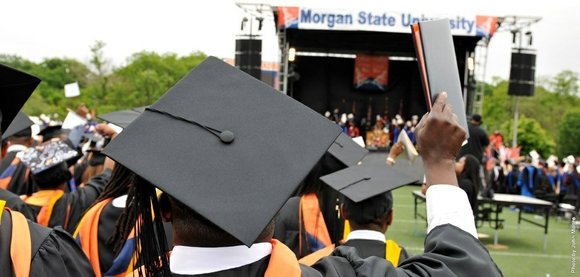Sixty-five percent of African-American undergraduates attend college as independent students, balancing work and family responsibilities in addition to their academic pursuits.
African Americans receive less financial aid because many enroll less than full-time and do not qualify as part-time students, said authors of a new report issued by the National Urban League’s Washington, Maryland and Virginia Bureau.
Authors of the report, titled, “From Access to Completion: A Seamless Path to College Graduation for African-American Students,” say better methods are needed to serve nontraditional students, those who aren’t dependent upon parents or others to assist them financially.
“African-American independent students are more likely to be identified as employees who decided to work and go to school, in other words, they are more likely to be employees working to care for a family as opposed to students working to meet expenses,” said Susie Saavedra, the senior director for education and health policy at the National Urban League (NUL). “African Americans are also more likely than other races or ethnic groups to have a zero expected family contribution. ”
Chanelle P. Hardy, executive director of the NUL, said employment and family dynamics affect the type of postsecondary institutions that students attend, the amount of credits they take each semester, and their college persistence and completion rates.
The 26-page report noted that 48 percent of independent African-American undergraduates are single parents compared to 23 percent of whites, 34 percent of Latinos, 36 percent of Native Americans, and 19 percent of Asians.
“Consistent with their choice of institution, roughly one-third of independent African-American students are in bachelor’s degree programs, compared to 53 percent of dependent African-American students and 46 percent of all undergraduates,” Saavedra said.
The report comes 60 years after the landmark Supreme Court decision in the case of Brown v. Board of Education, which made equal access to educational opportunity the law.
“The timing of the report could not be better as we celebrate Brown v. Board of Education, which sought to ensure African Americans access to an education on par with white students,” Hardy said. “We haven’t achieved equity or access yet, but there is three times the number of black college graduates than there were [60 years ago] and that’s important because it demonstrates that, despite a strong public narrative to the contrary, African Americans both value and pursue education.”
NUL officials said they’re seeking to advance the conversation by providing the necessary supports and resources that will mitigate the challenges black students face.
They said the Pell Grant, which for more than 40 years has opened the doors of postsecondary education for millions of Americans, must be strengthened to fill the gap between rising tuition costs and decreasing state investment.
“Sixty-two percent of black students receive Pell Grants, which now cover just 31 percent of the cost of attendance [per year],” Saavedra said. “Yet, many black students receive even less than their incomes would allow because they’re more likely to be independent, low-income, employed and juggling familial obligations that prevent them from enrolling full-time for maximum aid.”
Because many black students enter college academically unprepared, most are using their Pell Grant funding for remedial courses that do not offer credits toward a degree, according to NUL officials.
Those students are also less likely to receive additional grants and, more than half of independent black students who qualify for Pell Grants ultimately drop out of school.
While the Pell Grant once financed 75 percent of the cost of a public four-year college education, it now covers just 31 percent of a student’s cost of attendance, which typically includes tuition and fees, books and supplies, room and board, and personal expenses, such as transportation, the report’s authors say.
“The purchasing power of the Pell Grant must be strengthened so that it continues to serve as a key resource to help needy students to access higher education,” Saavedra said.
“The recommendations we support include increasing the lifetime Pell Grant eligibility and restoring the ability to access the Pell Grant throughout the year.”
